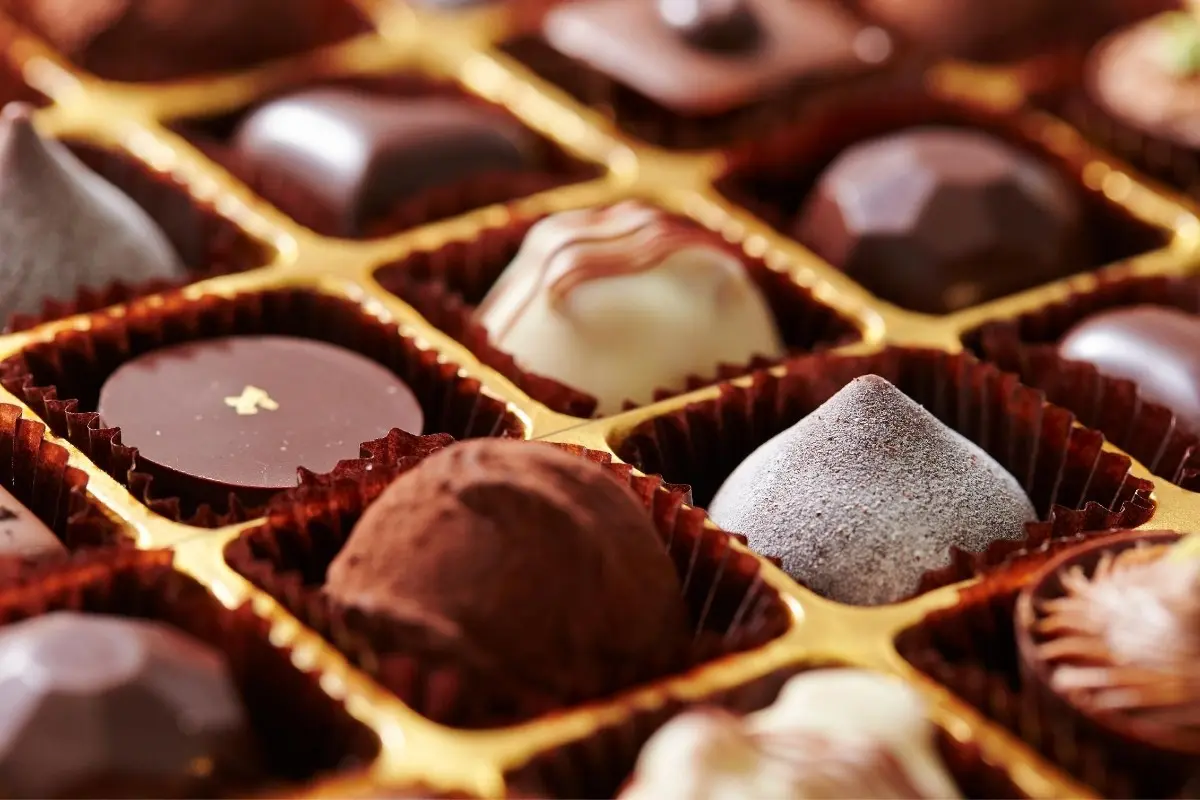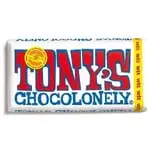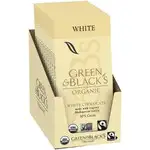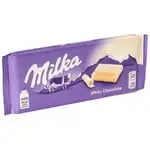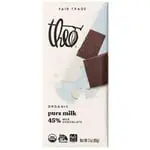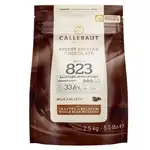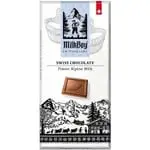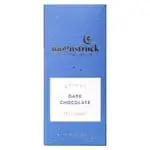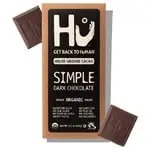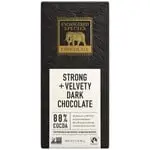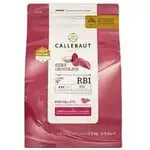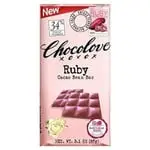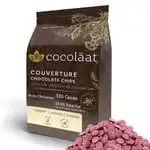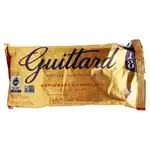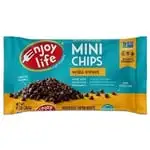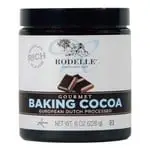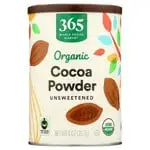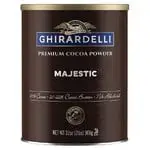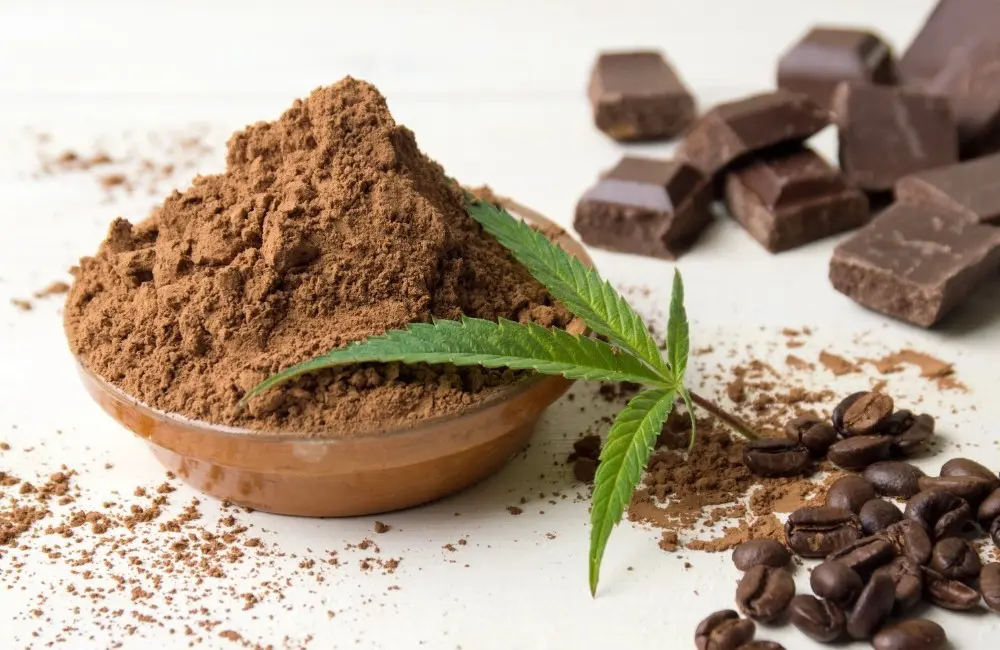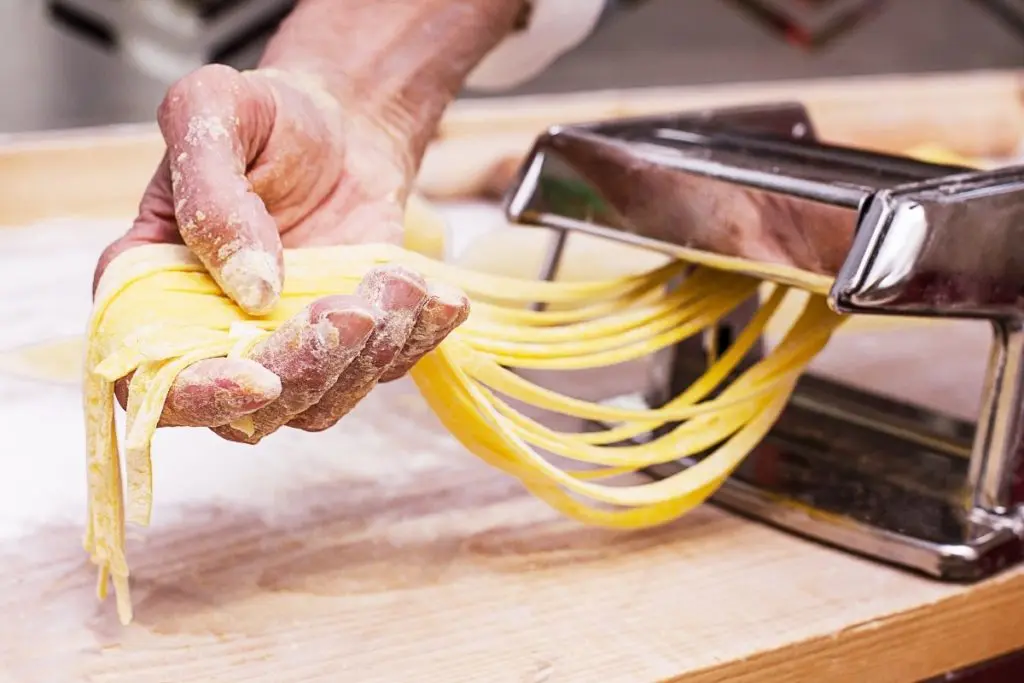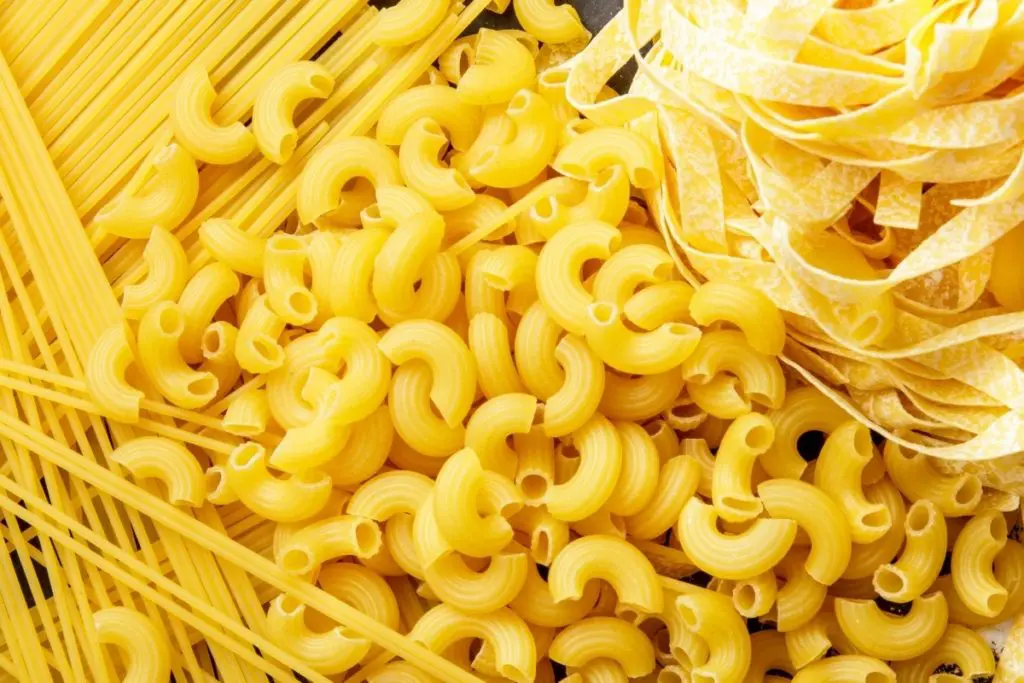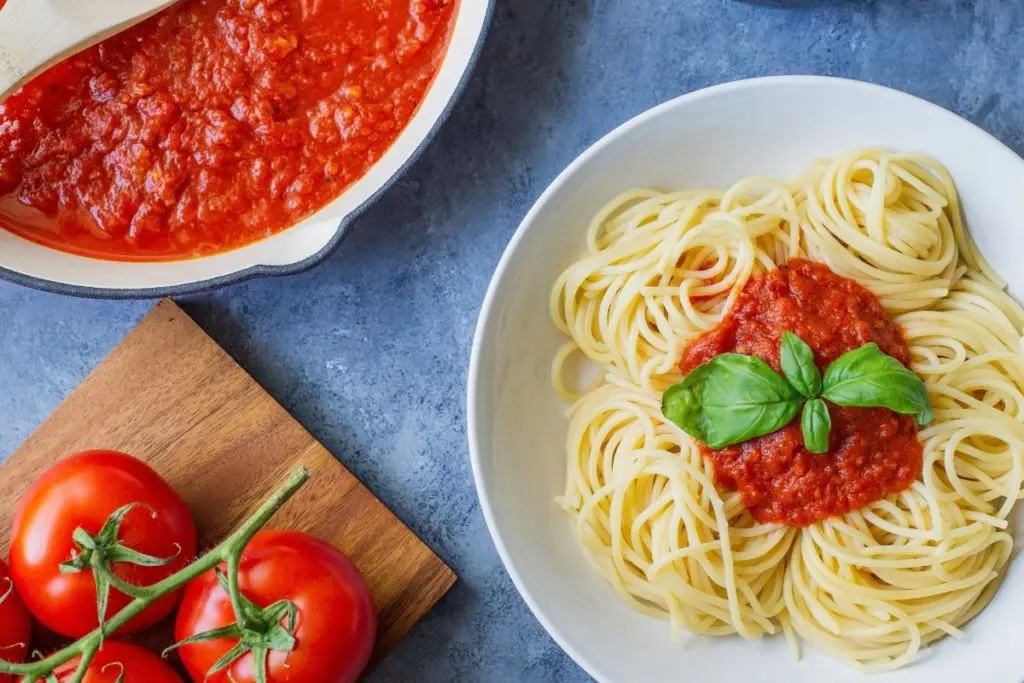Whether it’s the classic milk chocolate, the heart-healthy dark chocolate, or the indulgent white chocolate, everyone has a favorite kind of chocolate. But most people don’t realize that there are actually more types of chocolate out there besides these three.
Intrigued? Join us as we explore chocolate in all its decadent forms and flavors.
Chocolate 101
For any chocolate to qualify as actual chocolate, it must include at least one cacao bean byproduct — that’s what makes them chocolate! The official definition from the Food and Drug Administration (FDA) states that for any chocolate to be considered actual chocolate, it must contain at least one of the following: cocoa beans, cocoa nibs, chocolate liquor, cocoa butter, and cocoa powder.
Getting all these byproducts is a little complicated, so let’s step into the life of a cacao bean for just a minute.
Where Does Chocolate Come From?
First, cacao fruit is picked from the cacao plant. These fruits crack open to reveal the seeds inside, which are what we call the cacao beans. Before they are considered consumable, these beans are dried, fermented, and occasionally roasted.
To get cocoa nibs, we take these beans and de-shell them, leaving just the inside bits. Nibs make great confectionary decorations and are integral to many different recipes, both sweet and savory.
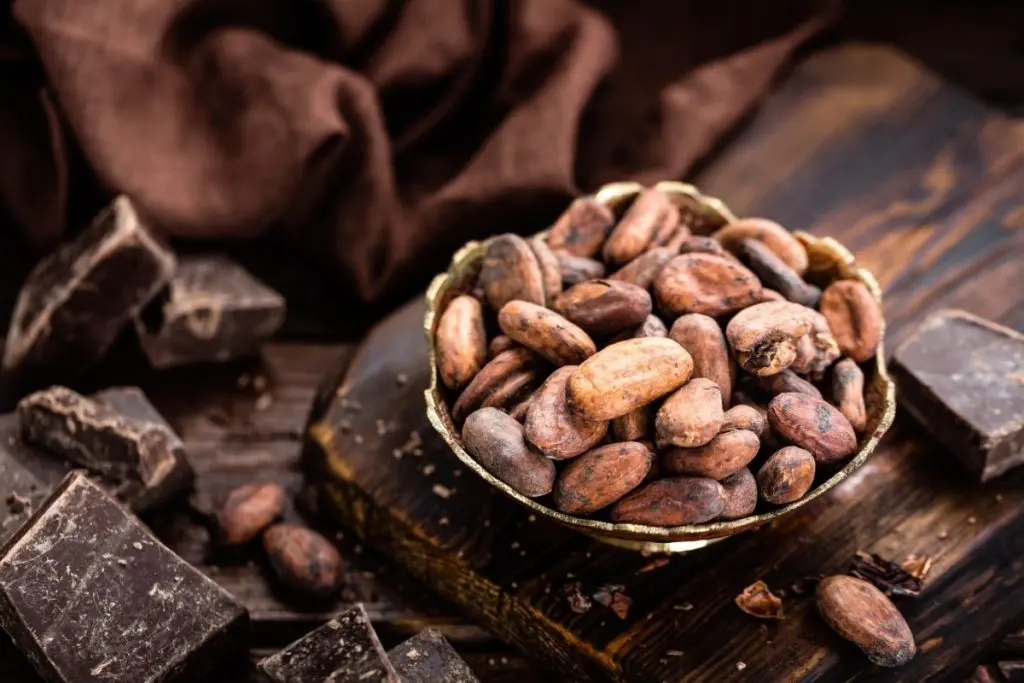
After all the nibs are free, processors grind them into a powder that melts down into a liquid called chocolate liquor. Chocolate liquor is used for everything, from making actual chocolate to mixing up a nice cocktail. Despite the name, there’s no liquor or alcohol in chocolate liquor.
To get the final two cacao plant byproducts, we take chocolate liquor and press it to separate the oils from the solids. This process leaves us with cocoa butter (the oils) and cocoa powder (the solids). Cocoa butter can be used in making actual chocolate but is also popular in the skincare world for its moisturizing and revitalizing qualities. Cocoa powder is a universal favorite for everything from cake decorations to pork loin spice rubs.
What Are the Different Types of Chocolate?
When you hear the question, “how many types of chocolate are there?”, most people immediately come up with the main three: white chocolate, milk chocolate, and dark chocolate. However, there’s a fourth type that recently shook the culinary world. Ruby chocolate, a red chocolate made from the rare ruby cacao bean, was formally introduced in 2017.
But beyond these four, there are a lot of other, less official chocolate types out there. In fact, in our research for this article, we came up with no less than 13 different kinds of chocolate! So without further ado, let’s take a look at each of these different types and what makes them unique.
1
White Chocolate
Let’s start with perhaps the easiest chocolate to identify. Despite the libel and slander accusing it of not being chocolate — white chocolate does, in fact, meet the official definition of chocolate. That’s because it contains a cacao plant byproduct: cocoa butter.
You make white chocolate by mixing cocoa butter with sugar, milk, vanilla, and lecithin. Lecithin is an emulsifier that helps all the ingredients blend better for a smoother texture. According to the FDA, white chocolate must contain at least 20% cocoa butter, 14% milk, and no more than 55% sugar.
The flavor profile of white chocolate is very sweet, with some bold notes of sweetened condensed milk and vanilla. There is very little classic “chocolate” taste, as it contains no actual chocolate liquor. However, the cocoa butter base gives it a rich, creamy texture that melts on your tongue. The high sugar content and smooth texture make it a popular choice for confectionary decorations. Plus, it’s white, so with a little bit of food coloring and some imagination, you can turn white chocolate into almost anything!
The reason some accuse white chocolate of not being chocolate comes from the fact that cocoa butter is, on the whole, costly. Thanks to its extensive use in the cosmetics industry, there’s always a high demand for it. To get around this, some companies will either dilute or entirely replace cocoa butter with vegetable fats or other oils. These imposters do not meet the official standards for white chocolate (or any chocolate, for that matter). They are why white chocolate gets a bad rap.
Our White Chocolate Picks
2
Milk Chocolate
The timeless and classic milk chocolate combines chocolate liquor with sugar and milk. Some add soy lecithin as an emulsifier (to make the texture smoother). The FDA’s milk chocolate requirements are outlined as at least 10% chocolate liquor and 12% milk. There is no parameter for sugar content, which is why some milk chocolate is incredibly sweeter than others. Every chocolate maker gets to decide for themselves.
Whether in bar form or mixed with other candy ingredients, milk chocolate is the most common form of chocolate in grocery and convenience stores. The flavor profile includes caramelized sugar notes with a light vanilla aftertaste, making it great for just plain old eating by itself. Milk chocolate is also great for everything from s’mores to brownies to candy bars.
Our Milk Chocolate Picks
3
Dark Chocolate
With plenty of research to support a wide range of health benefits, dark chocolate has risen in popularity in the last decade. This more-bitter version of chocolate contains no dairy products whatsoever and is made entirely from chocolate liquor and sugar. Though the FDA requires dark chocolate to contain at least 15% chocolate liquor, most dark chocolate contains closer to 50% chocolate liquor. When you’re looking at chocolate bars in the store and see percentages advertised on the front, they refer to the chocolate liquor content. The higher the percentage, the more actual chocolate is in the bar. This also leads to higher levels of bitterness.
The FDA also states that sugar should not amount to more than 1/3 of dark chocolate content. No matter the chocolate liquor percentage, dark chocolate is noticeably more bitter than its sweeter relatives. Dark chocolate is also more robust than white or milk chocolate, and really gives a satisfying snap when you break a bar in half.
Dark chocolate offers an intense chocolate flavor that is sometimes accompanied by earthier tones and a slight vanilla aftertaste. In the baking world, dark chocolate is best when you want a deep, rich chocolate flavor. Dark chocolate is sometimes referred to as black chocolate, semisweet chocolate, and is often marketed as vegan chocolate. It has an average shelf life of 20 months.
Our Dark Chocolate Picks
4
Ruby Chocolate
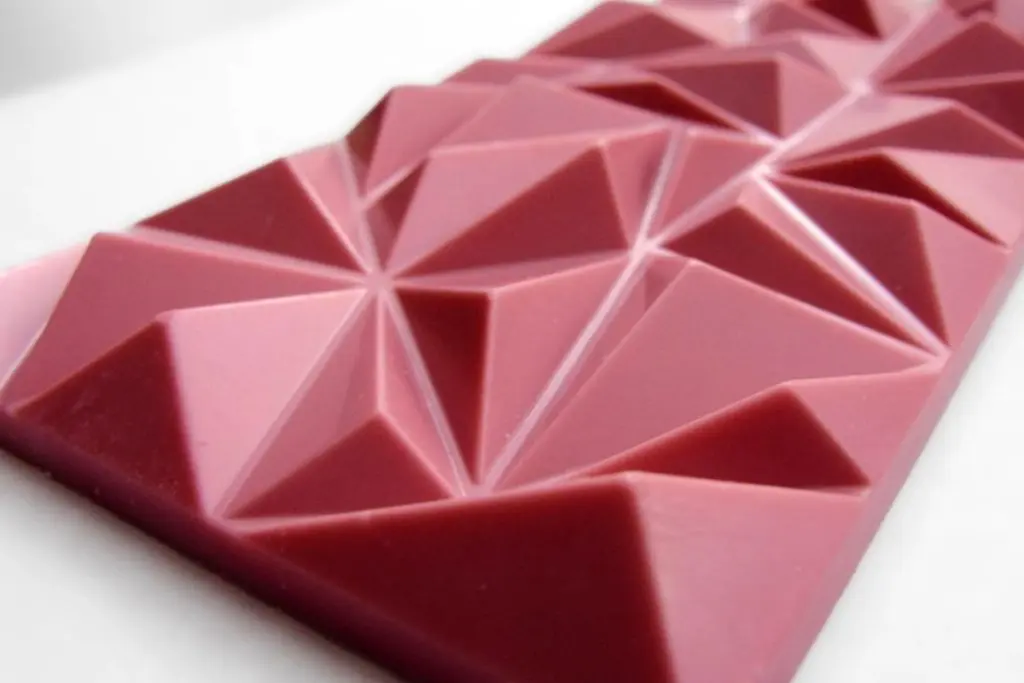
Back in 2017, a Belgian chocolate maker named Barry Callebaut officially introduced ruby chocolate to the world. While it may look like white chocolate with some food coloring, ruby chocolate is, in fact, a new kind of chocolate altogether. It derives its name from the unique ruby cocoa bean variety, but the specifics of what makes a cocoa bean qualify as a ruby cocoa bean are unknown. Callebaut owns the patent for ruby chocolate and its production process and has kept both a proprietary secret.
What we do know about ruby chocolate is that it does have a reddish, pinkish color. Since what makes ruby chocolate special is the actual ruby cocoa beans, it stands to reason that ruby chocolate can technically be made into ruby white chocolate, ruby milk chocolate, and ruby dark chocolate.
However, as it currently stands, there hasn’t been a wide range of ruby chocolate varieties on the market. The FDA has stringent requirements for ruby chocolate, which leaves little wiggle room. Officially, ruby chocolate must contain no less than 1.5% nonfat cacao solids and no less than 20% cacao fat. There are also restrictions regarding additives such as antioxidants, spices, coloring, and natural and artificial flavors.
As far as flavor, most reports agree that ruby chocolate tastes a bit like white chocolate flavored with raspberries. Often described as both sweet and sour, it’s significantly more acidic than other chocolates.
Our Ruby Chocolate Picks
5
Chocolate Liquor
As we said, chocolate liquor is made from ground-up, melted cocoa nibs. It comes in two primary forms, either a dark brown paste or a solid block. You might also call it unsweetened chocolate and baker’s chocolate. Chocolate liquor is, according to the FDA, 100% cocoa, with no added ingredients.
Flavor-wise, chocolate liquor is mostly just very, very bitter. It is perfect for a range of confectionery endeavors, imbuing everything from triple-chocolate cakes to double-fudge brownies with a deep, rich chocolate flavor. Chocolate liquor is great for decorating different foods, usually in the form of shavings. Though it has no actual alcohol content, chocolate liquor is common in cocktails.
6
Bittersweet Chocolate
Also called extra-dark chocolate, bittersweet chocolate has a higher cocoa content than even dark chocolate. The FDA requirement lowballs the number as a minimum of 35%, but most bittersweet chocolate contains 66% or more cocoa. Similar to dark chocolate, sugar content is less than 1/3.
Bittersweet chocolate is a common ingredient in baking. It offers a deeper chocolate flavor than dark or milk chocolate without affecting sweetness. Chocolate-chip cookies usually call for bittersweet or semisweet chocolate chips.
7
Semisweet Chocolate
In the culinary world, bittersweet and semisweet chocolate are interchangeable. The FDA even classifies them as the same, with the same requirements. In practice, however, bittersweet and semisweet chocolate aren’t the same. Semisweet chocolate, on average, has a higher sugar content than bittersweet chocolate, although not by much. When cooking or baking, the choice to use bitter or semisweet chocolate is up to the individual.
Our Semisweet Baking Chips Picks
8
German’s Sweet Chocolate
Named for the man who created it, Samual German, this type of chocolate is sweeter than semisweet chocolate. It contains a blend of chocolate liquor, sugar, cocoa butter, flavorings, and lecithin. German created this as a convenient alternative to chocolate liquor (baker’s chocolate). It eliminated a lot of extra steps for bakers and could save valuable time.
9
Cocoa Powder
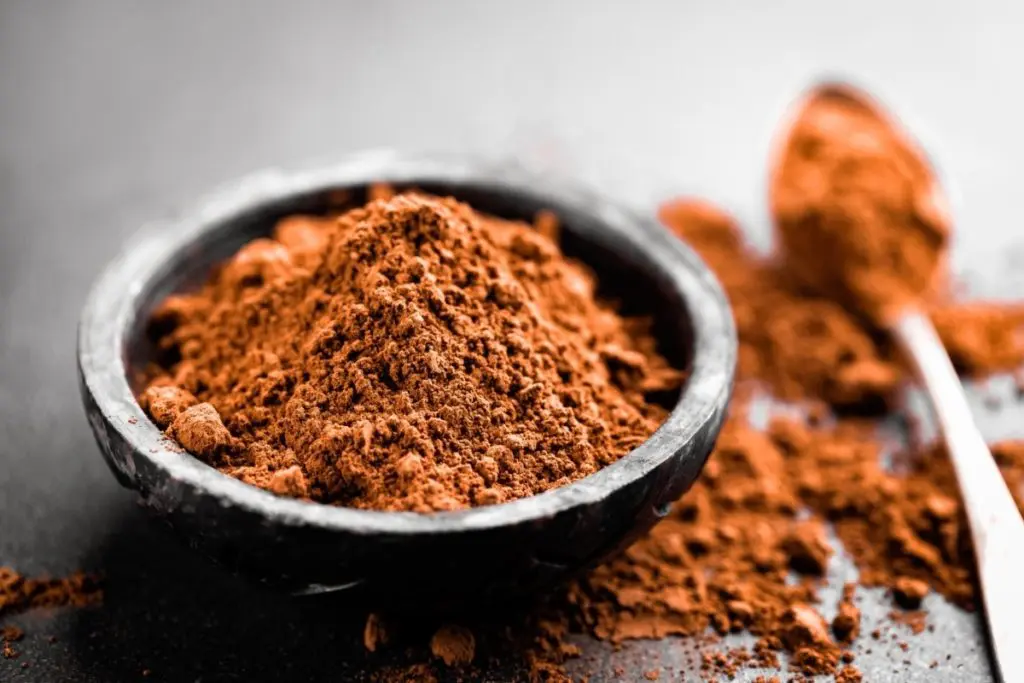
There are 2 main types of cocoa powder: natural and Dutch-processed. Natural cocoa powder has a light brown color with an intense chocolate flavor and light acidic notes.
Dutch-processed cocoa powder comes from natural cocoa powder that is alkalized to reduce the acidity. It is usually darker in color with a milder flavor. Both are great for baking, cake decorating, and even adding to spice rubs for enhanced complex flavor.
Our Cocoa Powder Picks
10
Couverture Chocolate
This expensive breed of chocolate contains a higher percentage of cocoa butter than standard chocolate. By following the standards for the 3 main types of chocolate, Couverture chocolate comes in white, milk, and dark varieties. All three melt quickly, easily, and evenly, and are suitable for tempering, candy making, and cake decorating. This feature helps professional bakers, as milk chocolate and dark chocolate are notoriously more challenging to work with than white when it comes to confectionery arts.
11
Modeling Chocolate
Modeling chocolate is not, strictly speaking, its own type of chocolate. But, since it is a type you can buy in a store, we decided to add it to our list. Modeling chocolate can come from any other kind of chocolate by adding either corn syrup, glucose syrup, or golden syrup. This addition makes the chocolate smoother and more fluid, which helps with decorating candies, cakes, and all kinds of treats.
12
Buttermilk Chocolate
The only difference between buttermilk chocolate — also known as skim-milk chocolate — and regular milk chocolate is the difference in milkfat content. To qualify as buttermilk chocolate, any amount must contain less than 3.39% milkfat. This difference in milkfat doesn’t appear to impact the flavor or texture of the chocolate… Honestly, we’re not sure why it exists. But, it’s one of the FDA’s recognized types of chocolate, so it makes our list.
13
Compound Chocolate
Lastly, compound chocolates are chocolate solids + vegetable fats (or another oil similar to the ever-expensive cocoa butter). While there can be both compound milk and compound dark chocolate, there is no compound white chocolate. The only cacao plant byproduct in white chocolate is cocoa butter, and compound chocolate omits cocoa butter in favor of cheaper, more easily obtained alternatives.
The goal of adding an oil or fat to cocoa solids is to create a smooth, easily liquefiable chocolate. Compound chocolate is for treats like chocolate-coated candy bars and other confectionary pourings.
The Possibilities Are Endless
As you can see, the world truly is your (chocolate) oyster. Between all these different forms of delicious, decadent chocolate, there’s nothing you can’t create!
Further Reading
